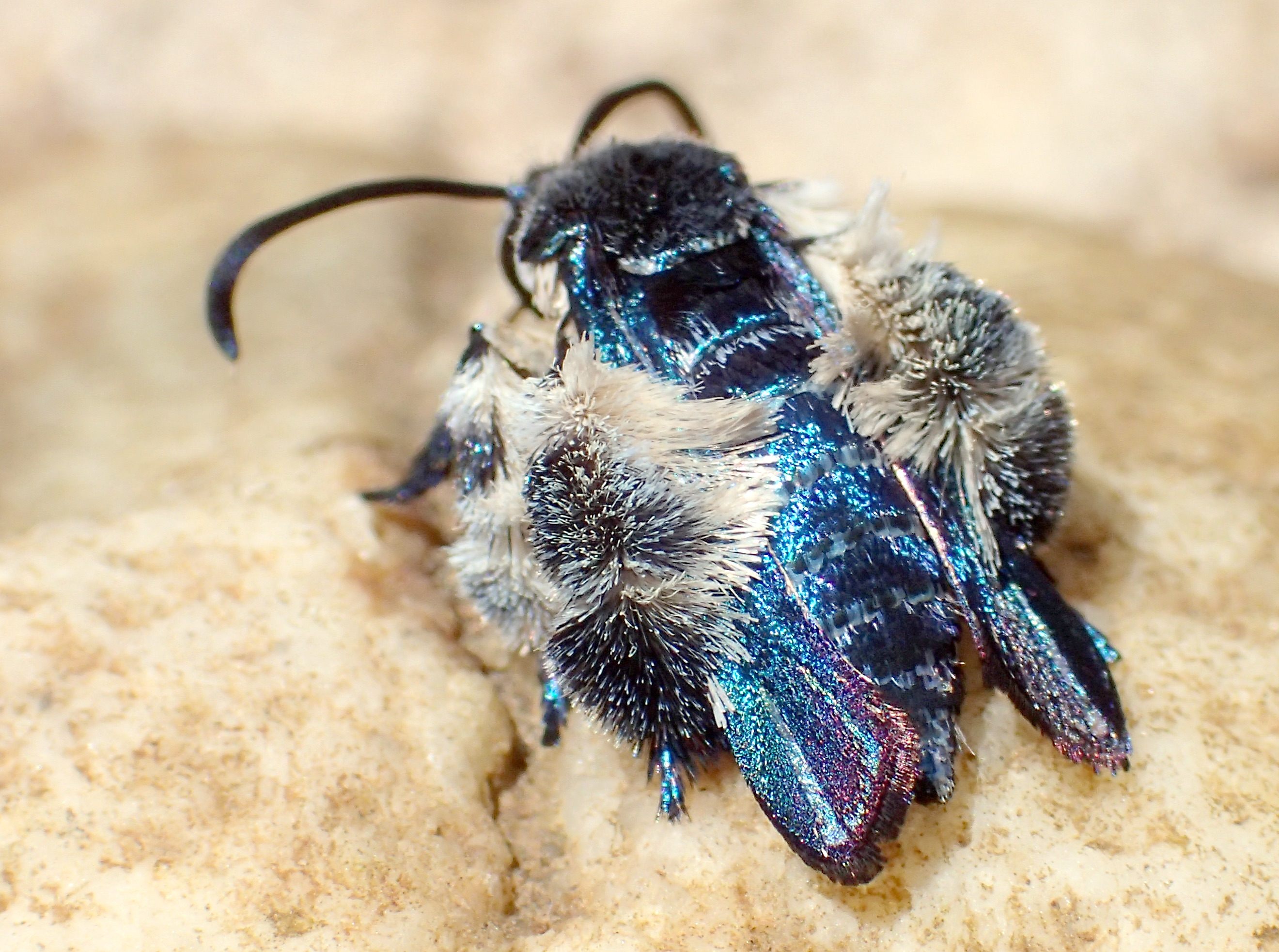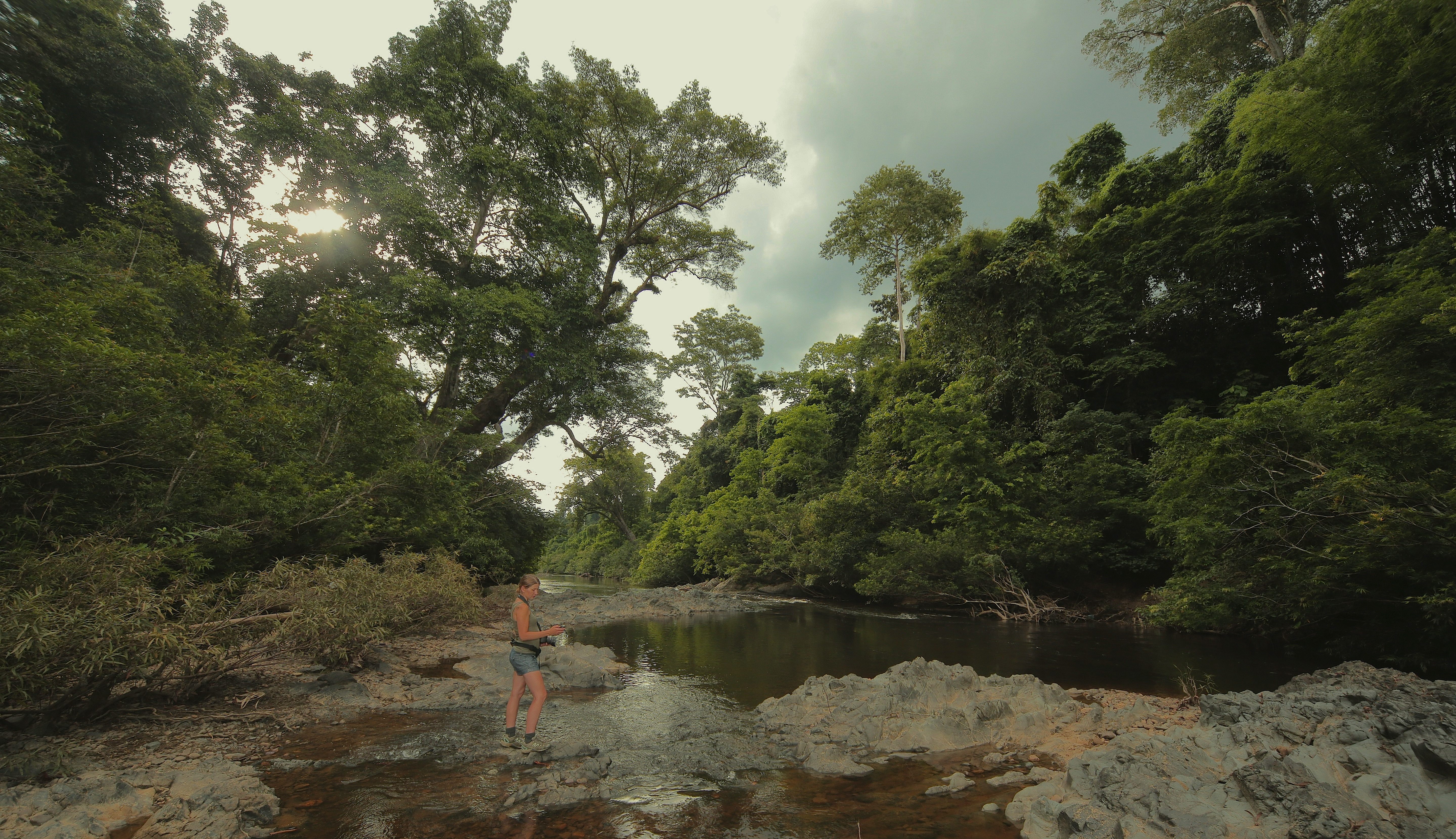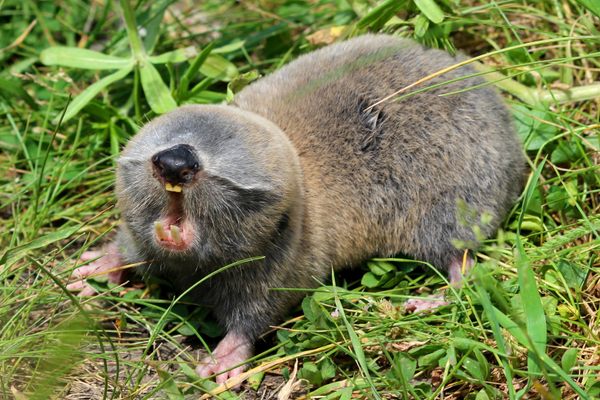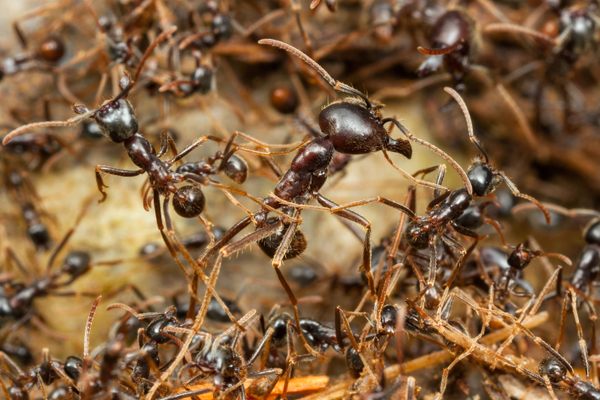Found: A Blue-and-White Moth Last Seen 130 Years Ago
It acts a lot like a bee.

Our knowledge of Heterosphecia tawonoides, a blue-and-white clearwing moth that pretends to be a bee, was limited to one damaged museum specimen collected in Indonesia in 1887. No one has reported a live specimen since. Until now.
Marta Skowron Volponi, an entomologist from the University of Gdansk in Poland, was visiting Taman Negara National Park in Malaysia when she caught sight of a buzzing creature bearing an eye-catching blue sheen on its wings. The insect quickly flew away but, as the scientist explained in a press release, its unique color was a clear sign that it was something special.
Since then, Skowron Volponi and her husband, wildlife filmmaker Paolo Volponi, have observed 12 H. tawonoides individuals buzzing around the 130-milion-year-old Taman Negara jungle. “You think about moths and you envision a grey, hairy insect that is attracted to light,” the scientist said. “But this species is dramatically different—it is beautiful, shiny blue in sunlight, and it comes out during the day.”

Part of what makes this moth so interesting, Skowron Volponi wrote in a blog post, is that it is “a classic example of so-called Batesian mimicry, which occurs when a harmless species imitates one that has active defense mechanisms, such as stinging or biting.” In this case, the moth takes on bee-like features, such as translucent wings and a furry body. The latter is actually made of scales that have evolved to resemble bee fur. “It is a master of disguise, mimicking bees on multiple levels and even hanging out with them,” Skowron Volponi said in the press release.
The couple co-authored a paper, published in Tropical Conservation Science, offering the first description of such bee-mimicry. In addition to physical similarities, the pair also describe how the moth flies in zigzags and buzzes like bees. The study also describes other behaviors, such as “mud-puddling,” a mating practice that sees male moths using their mouthparts to collect sodium to give to females.
Skowron Volponi hopes that her findings will raise awareness about the impact of deforestation in Malaysia, a global biodiversity hotspot that bears the world’s highest rate of forest loss. As she explains, deforestation can cause mudslides that damage the forest riverbank and its diverse ecosystem. “Once those riverbanks vanish,” she said in the release, “so too will all of these species, including my favorites, the clearwing moths.”

















Follow us on Twitter to get the latest on the world's hidden wonders.
Like us on Facebook to get the latest on the world's hidden wonders.
Follow us on Twitter Like us on Facebook